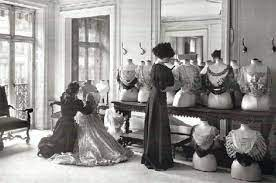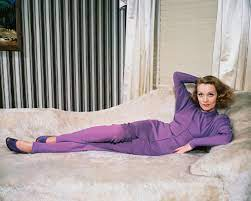Charles Frederick Worth was the first fashion designer in history to sew a label onto the clothing he designed. He was the first person to have a large, modern business in Paris in the 19th Century. He employed many seamstresses and tailors. Worth was a former clothier and was able to set the fashion for his clients because he had royal connections. Napoleon helped Worth achieve success in 1853 when he declared that visitors to his court would not be allowed without formal attire. Worth’s clothing was incredibly popular and he had an endless supply of custom.

Fashion writers and buyers were sent to Paris to attend fashion shows and to purchase garments to copy the designs. Fashion magazines began to include photographs at the beginning of the 20th Century. These magazines were highly desired and sought after. The public was inspired by the fashion media.
French fashion has been called the Golden Age between the World Wars. The rise of Hollywood and advances in technology led to the replacement of carriages by cars. In the 1920s, women adopted a more masculine style with short Bob hairstyles and dresses without waistlines. Coco Chanel made sportswear unisex, and it became very popular. Menswear tended to be more relaxed and comfortable. To complete a contemporary stylish look, consider Mens Handmade Leather Belts from hipandwaisted.com/handmade/mens-leather-belts
In the 1930s and 1940s, the Parisian fashion houses began to close and the influence that Paris had on haute couture started to diminish. Some designers moved from France to the United States. The US became a fashion centre in the 1940s. Marlene Dietrich and Katharine Hayworth were among the actresses who had a major impact on fashion trends during this time.

The 1950s saw a proliferation of fashion designers. This decade was the last in which Paris would hold such a stronghold on haute couture. In the 1960s, many designers offered a wealth of different styles of fashion. For the first time, choice was an option. Mary Quant launched the mini skirt, and London became a city that set trends.
Men’s clothing was available in many different fabrics, and jeans became more popular. The two world wars caused a huge change in the society around the globe. The two world wars seemed to usher in a new age of fashion design, and the availability of clothing to people who had never before been able to afford it. The 1960s and 1970s brought a new era to fashion, one of individualism and freedom of expression.